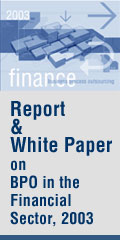|


|
IMF implements major lending policy improvements
Enhancing Stand-by Arrangements (SBA): Reforms to the SBA—the Fund’s workhorse lending instrument for crisis resolution—aim to increase its flexibility and ensure its availability as a crisis prevention instrument for members that may not qualify for the FCL. The new SBA framework will enable high-access on a precautionary basis and provide increased flexibility by allowing frontloading of access and reducing the frequency of reviews and purchases where warranted by the strength of the country’s policies and the nature of the balance of payments problem faced by the country.
Doubling access limits: Nonconcessional loan access limits for countries are being doubled, with the new annual and cumulative access limits for Fund resources being 200 and 600 percent of quota, respectively. These higher limits aim to give confidence to countries that adequate resources would be accessible to them to meet their financing needs. Access above these limits will continue to be provided on a case-by-case basis under Exceptional Access procedures, which are also being clarified and streamlined.
Adapting and simplifying cost and maturity structures: To create the right incentives for borrowing from the Fund, the cost and maturity structures for high-access and precautionary Fund lending are also being overhauled. The elimination of the time-based repurchase expectations policy—an administrative mechanism meant to induce early repayments—will effectively lengthen grace periods and simplify the repayment schedules of Fund lending. This administrative mechanism is replaced by the introduction of a new time-based surcharge, which together with streamlined level-based surcharges, will help mitigate credit risks without increasing the cost of borrowing to countries that make timely repayments to the Fund. The new schedule of commitment fees, which increases with the size of precautionary lending, would help mitigate liquidity risks to the Fund without discouraging early access to IMF resources.
Reform of facilities for low-income country members: In addition to the reform of structural conditionality, which applies also to concessional loan facilities available for low-income countries, the Fund is considering modifications to its concessional lending facilities to strengthen the IMF’s lending tools for providing short-term and emergency financing to low income countries.
Simplifying lending toolkit: Some facilities that have not been recently used (Supplemental Reserve Facility and the Compensatory Financing Facility) are being eliminated.
Boosting the Fund’s resources: A substantial increase in the IMF’s resources is required to give full confidence to countries that the Fund will have sufficient money available should they need to borrow. Japan has already provided the IMF with an additional US$100 billion to bolster the Fund’s lendable resources available to address the current crisis to about US$350 billion, and the European Union has committed €75 billion. Efforts are under way to further increase IMF resources in the run-up to the April 2 London summit of the G-20, and to at least double concessional resources for low-income countries.
<< GO TO FIRST PAGE
(Source: IMF Press Release)
Medium-term fiscal consolidation a priority for India, says IMF
IMF Welcomes Comprehensive European Response to Financial Crisis
IMF sees heightened risks to global financial stability
CLICK FOR SPECIAL SECTION ON GLOBAL FINANCIAL CRISIS
Subprime Crisis: A Special
CLICK FOR MORE FEATURES & STORIES
|
|
|


